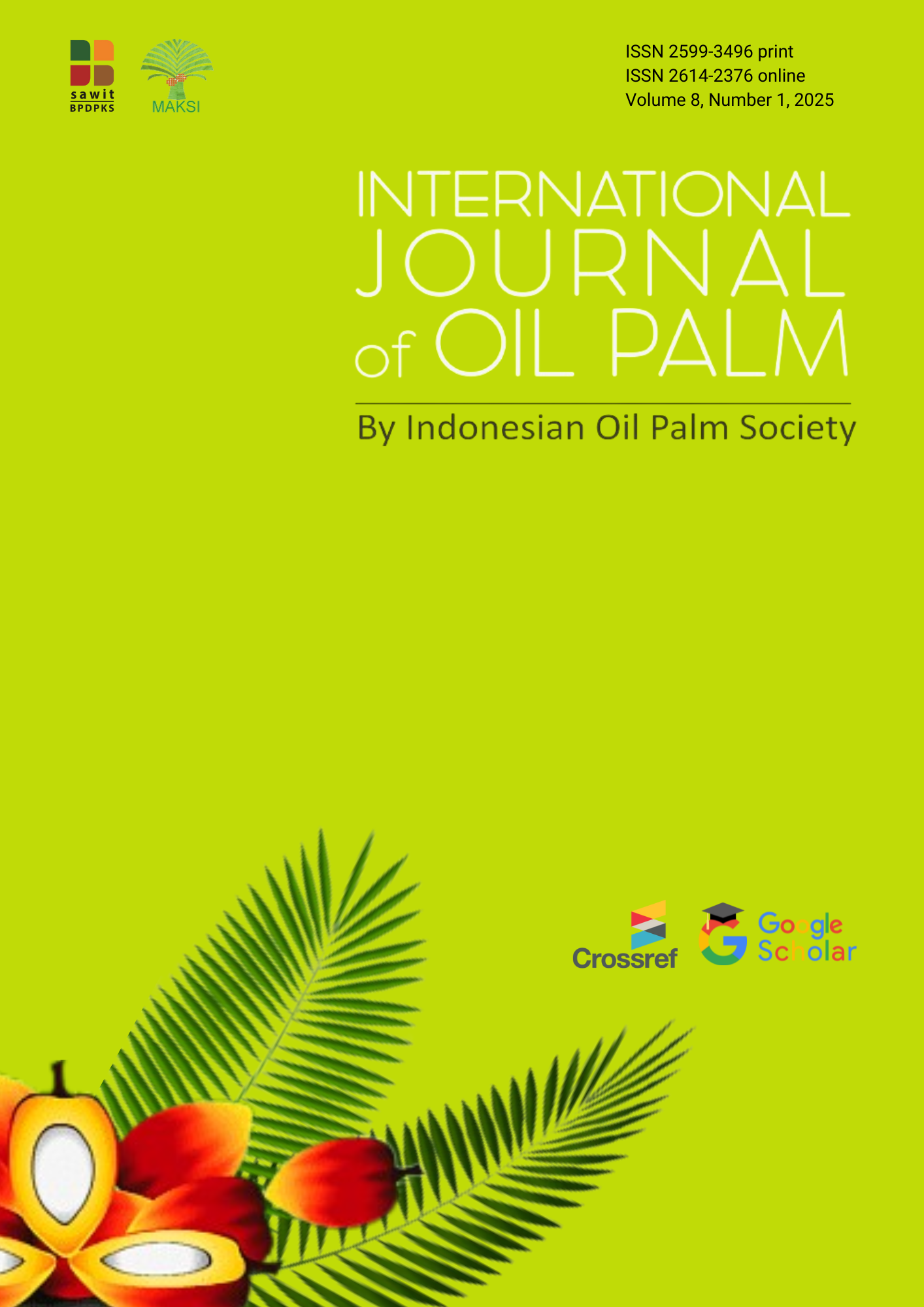Palm Oil Adulteration Detection Using Model Averaging of Machine Learning Classifiers on Simulated Chemical Data
Keywords:
Palm oil adulteration, model averaging, Simulated data, Machine learning, Ensemble learningAbstract
Palm oil adulteration poses significant health and economic risks, necessitating accurate detection methods. This study develops a machine learning framework combining KNN, SVM, and Random Forest via weighted model averaging to analyze synthetic FTIR spectra simulating pure and adulterated palm oil. SVM emerged as the top performer (97.3% accuracy), significantly outperforming Random Forest (86.9%) and KNN (85.9%). Principal Component Analysis revealed distinct clustering, with PC1 (63.3% variance) strongly correlate with key adulteration markers like ester C=O (1745 cm?¹) and OH (3300 cm?¹) vibrations. Spectral segmentation identified the 1000–1100 cm?¹ region (C-O stretches) as most critical for detection, enabling a proposed two-stage screening protocol that reduces analysis time by 60% while maintaining >90% accuracy for 5% adulterant concentrations. The synthetic dataset, validated against experimental references, replicated physicochemical trends, including peak broadening in oxidized samples (+20% FWHM) and dye-specific N=O peaks (1520 cm?¹). Model averaging enhanced stability, reducing performance variability to 1.2% versus 3.5–4.8% for individual models. These results highlight SVM’s superiority in handling high-dimensional spectral data and non-linear patterns, while the methodological advances—including noise modeling (SNR = 40 dB) and feature selection—offer practical solutions for portable FTIR devices. The framework supports real-time adulteration screening in resource-limited settings, with implications for food safety regulation and IoT-based quality monitoring in global palm oil supply chains.
Downloads
References
Ahmad F, Rohman A, & Windarsih A. 2021. Toxicological effects of synthetic dyes in adulterated palm oil: Evidence from in vivo studies. Journal of Food Safety. 41(3):102–115.
[BPOM] Badan Pengawas Obat dan Makanan. 2023. Laporan pengawasan minyak sawit di pasar tradisional Indonesia. BPOM RI.
Breiman L. 2001. Random forests. Machine Learning. 45(1):5–32.
Cortes C, Vapnik V. 1995. Support-vector networks. Machine Learning. 20(3): 273–297.
Cover T, & Hart P. 1967. Nearest neighbor pattern classification. IEEE Transactions on Information Theory. 13(1):21–27.
de Santana FB, Neto WB, & Poppi RJ. 2019. Detection of olive oil adulteration using FTIR spectroscopy and SVM classification. Food Chemistry. 273:99–105
[EFSA] European Food Safety Authority. 2022. Adulteration trends in palm oil products in the EU Market. EFSA Journal.
Li H, Liang Y, Xu Q, Cao D. 2021. Key wavelengths screening using competitive adaptive reweighted sampling method for multivariate calibration. Analytica Chimica Acta. 648(1):77–84.
Rohman A, & Che Man YB. 2012. The optimization of FTIR spectroscopy combined with chemometrics for analysis of animal fats in quaternary mixtures. Spectroscopy Letters. 45(7):527–533.
Rohman A, & Windarsih A. 2023. FTIR spectroscopy combined with chemometrics for authentication of palm oil and its adulterants: A review. Food Additives & Contaminants: Part A. 40(2):1–15.
Silverstein RM, Webster FX, & Kiemle DJ. 2014. Spectrometric identification of organic compounds (8th ed.). Wiley.
Suryanto D, Munawar AA, & Rohman A. 2022. Chromatographic techniques for the detection of palm. Food Science and Technology. 59(4): 1234–1245.
Syahir A, Hameed S, & Choong TSY. 2020. Discrimination of lard adulteration in palm oil using FTIR spectroscopy and chemometrics. Journal of Oleo Science. 69(7):687–695.
Universitas Indonesia. 2022. Dampak kesehatan minyak goreng bekas terhadap penyakit kardiovaskular. Laporan Penelitian.
Wang Y, Veltkamp DJ, & Kowalski BR. 2023. Multivariate instrument standardization for FTIR spectros-copy. Analytical Chemistry. 65(9):1170–1176.
Zhang X, Qi X, & Chen W. 2022. Challenges in FTIR-based food adulteration detection: A critical review. Critical Reviews in Food Science and Nutrition. 62(10):1–18.
Downloads
Published
How to Cite
Issue
Section
Citation Check
License
Copyright (c) 2025 I Gusti Ngurah Sentana Putra

This work is licensed under a Creative Commons Attribution-ShareAlike 4.0 International License.




